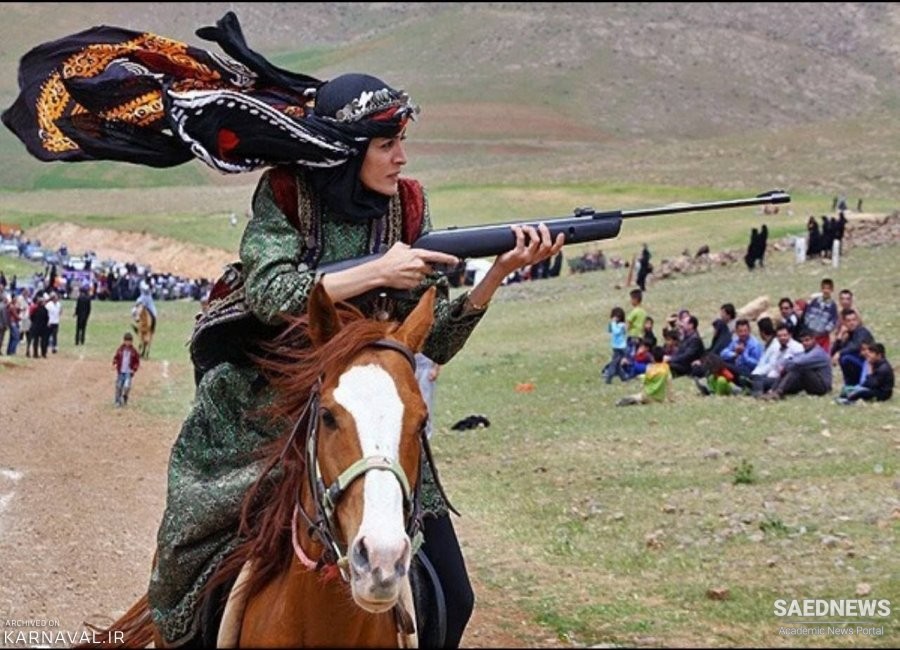Members of this dynasty ruled over a vast territory extending from the Diz River in the north to the vicinity of Shiraz in the south. Their territory included modern Bakhtiari, Kuh-Gilu-Boir Ahmed, Mamasani and parts of Khuzistan and Isfahan provinces. The archaeological remains clearly indicate the economic prosperity of Lur-i-bozorg during the reign of this dynasty.
The fall of the Atabak dynasty terminated the territorial unity and the economic prosperity of the Luri-bozorg. The area broke up into tribal territories without a centralized administrative apparatus. Later, during the Safavid period (1501-1750), Lur-i-bozorg was divided into three parts: the northern part became known as Bakhtiari, the central part or KuhGilu retained its old name, while the southern part became known as Mamasani. The Mamasani district was previously inhabited by another group of Lur known as Shul and hence the area was known as Shulistan (the land of Shuls). However, the Mamasani tribal confederacy left their territory in Kuh-Gilu, moved southward and conquered Shulistan. The area has been known as Mamasani ever since.
The Safavids, who had come to power by the support of seven Turkic tribes, granted lands as well as high administrative position to the leaders of these tribes as they took control of Iran. Thus, Kuh-Gilu was granted to the leaders of Afshar, one of the seven Turkic tribes, who moved to Kuh-Gilu and assumed the leadership of the area (Minorsky 1936). However, the Afshar were faced with constant uprisings of the Lur tribes, and eventually they were driven out during the latter part of the Safavid rule at the end of the seventeenth century.
In the meantime, Bakhtiari was ruled by influential Luri tribal leaders, some of whom were occasionally appointed as governors of the entire area (Sardar As'ad 1914).
Mamasani, on the other hand, remained a district of Fars province, under the jurisdiction of the governor-general of that province. However, the tribal leaders maintained a certain degree of influence in the area.
In 1736, the Safavids were replaced by another Turkic dynasty known as Afshar, which ruled from 1736 to 1750. Nader Shah, the founder of this dynasty, spent much of his time campaigning inside and outside of the country. He carried on several military operations against the Lurs of Bakhtiaris and Lur-i-kuckek during which he executed several tribal leaders and exiled several thousand families of the Bakhtiaris to northeastern Iran.
The Afsharids were overthrown by the Zand (1750-1794), a Lur dynasty from Lur-i-kuchek. The founder of this dynasty was Karim Khan, from the Zand tribe of Lur-i-kuckek, who took control of Iran after a long struggle. The Zands chose Shiraz as their capital and maintained dose ties with the Lurs of Mamasani, Kuh-Gilu, Bakhtiari and Lur-i-kuckek. The founder of the Zand dynasty transferred several thousand families from Lur-i-kuchek to the vicinity of Shiraz.
In general, the reign of the Afsharids and Zands witnessed numerous tribal revolts and the expansion of pastoral nomadism at the expense of the settled communities in regions inhabited by the Lurs as well as some other tribal groups of Iran.
The Zand dynasty was ousted by the Qajars, Turkic pastoral nomads from northern Iran. The Qajars (1794-1924) managed to overthrow the Zands after a long struggle which left many villages devastated. As they took power, they enforced the following policies: 1) the Zands along with several other Luri tribes were exiled from Fars province to central Iran, 2) the Kuh-Gilu and the Mamasani regions were annexed to Fars, 3) high-ranking Qajars were appointed as governors to various regions of Iran, including the territories inhabited by the Lurs, 4) military operations were often carried out against tribal chiefs who disobeyed the Qajars or refused to pay taxes. Often influential Luri leaders were killed.
Despite these policies the Qajars never managed to subdue the Lurs entirely. As a matter of fact, not only did they lose control of most Lur territory during the later part of their rule, but they were severely weakened by the Bakhtiaris, who marched to Tehran in support of the Constitutional Revolution (1906), conquered the capital and forced the Qajar monarch to cede his absolute power. In addition, several Bakhtiaris assumed high-ranking positions such as prime minister and governors-general. The weakened Qajar dynasty was overthrown by Reza Khan in 1924.


 The Lurs of Persia
The Lurs of Persia














































